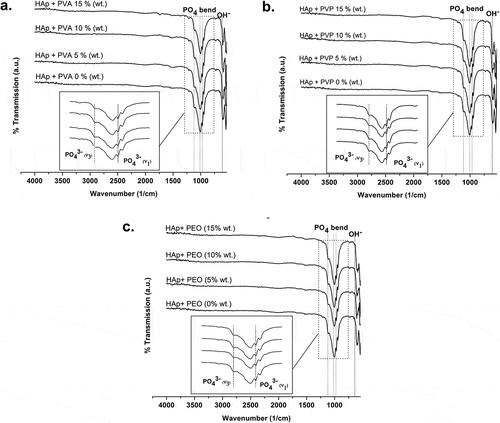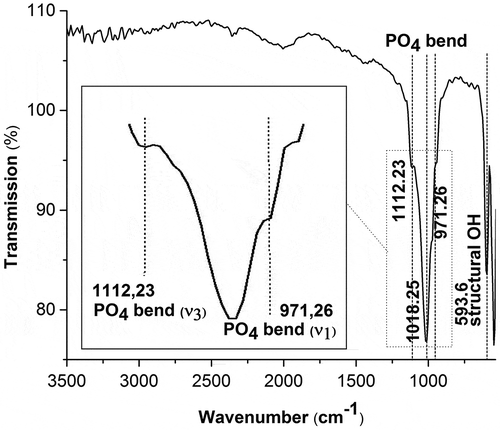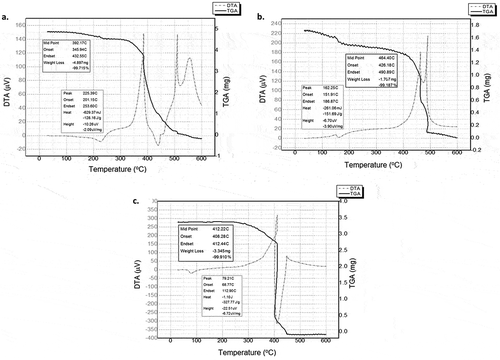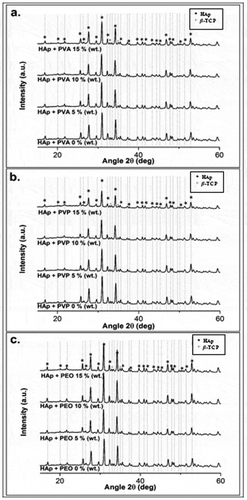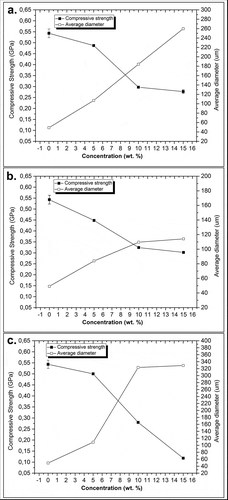Figures & data
Figure 1. FTIR spectra of: (a) raw materials of golden apple snail (Pomacea canaliculata) and (b) decomposed materials after calcination at high temperatures.
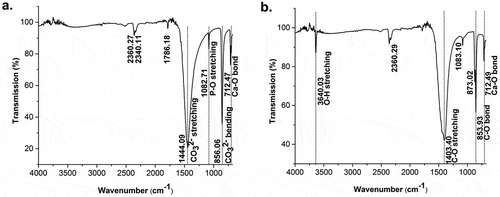
Figure 2. Morphological changes of the precursors to form HAp: (a) raw golden apple snail (Pomacea canaliculata) shell; (b) CaO decomposed from raw materials; (c) HAp after sintering at 1000°C for 6 h; and (d) HAp powder.
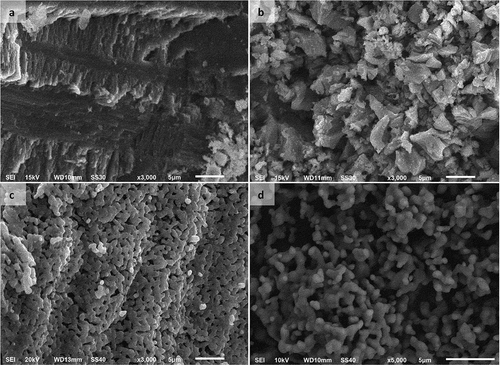
Figure 5. Increases in the pore size of HAp scaffolds as the porogen (PVA, PVP, or PEO) concentration is increased.
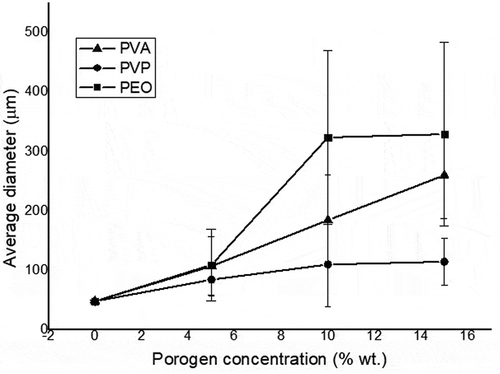
Figure 6. Macropore morphologies of hydroxyapatite (HAp) scaffolds fabricated using polyvinyl alcohol (PVA) as a porogen in the following concentrations: (a) 0 wt %; (b) 5 wt %; (c) 10 wt %; and (d) 15 wt % (Insets: HAp-based scaffolds magnified 3000 times).
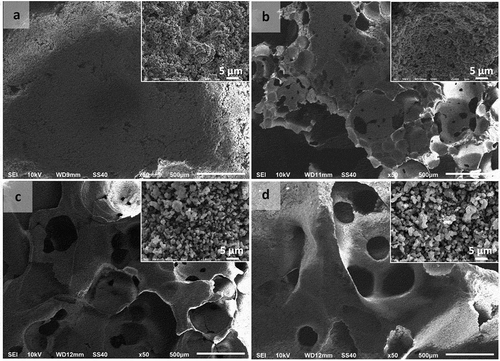
Figure 7. Macropore morphologies of hydroxyapatite (HAp) scaffolds fabricated using polyvinylpyrrolidone (PVP) as a porogen in the following concentrations: (a) 0 wt %; (b) 5 wt %; (c) 10 wt %; and (d) 15 wt % (Insets: HAp-based scaffolds magnified 3000 times).

Figure 8. Macropore morphologies of hydroxyapatite (HAp) scaffolds fabricated using polyethylene oxide (PEO) as a porogen in the following concentrations: (a) 0 wt %; (b) 5 wt %; (c) 10 wt %; and (d) 15 wt % (Insets: HAp-based scaffolds magnified 3000 times).
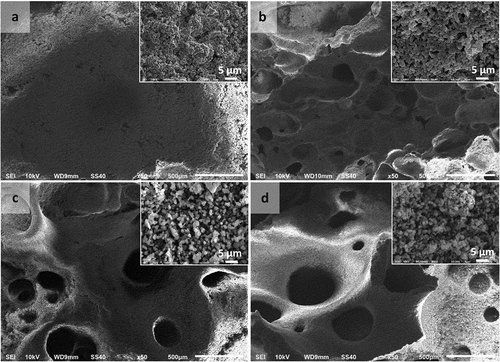
Figure 10. FTIR spectra of HAp-based scaffolds fabricated using porogens: (a) PVA; (b) PVP; and (c) PEO.
